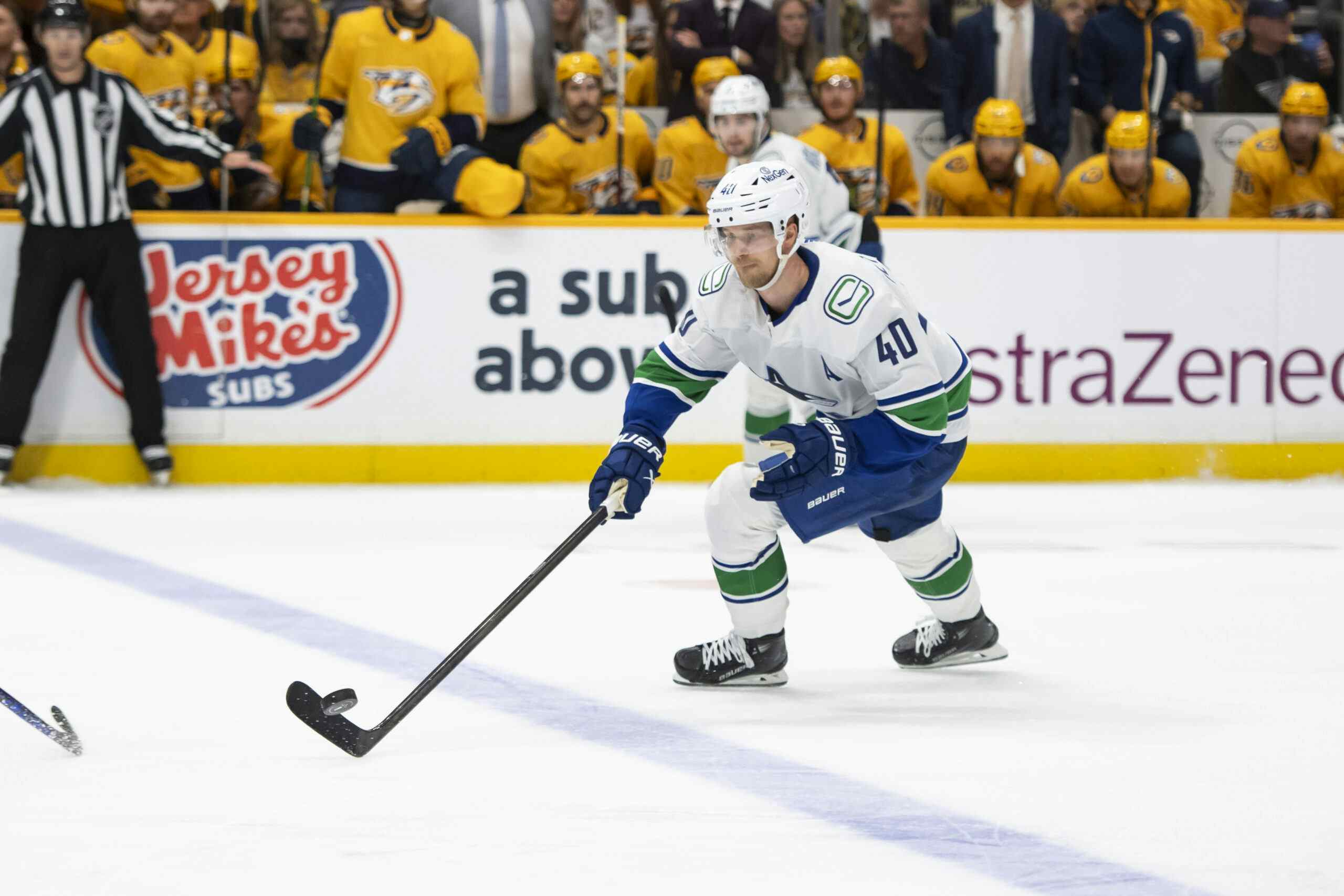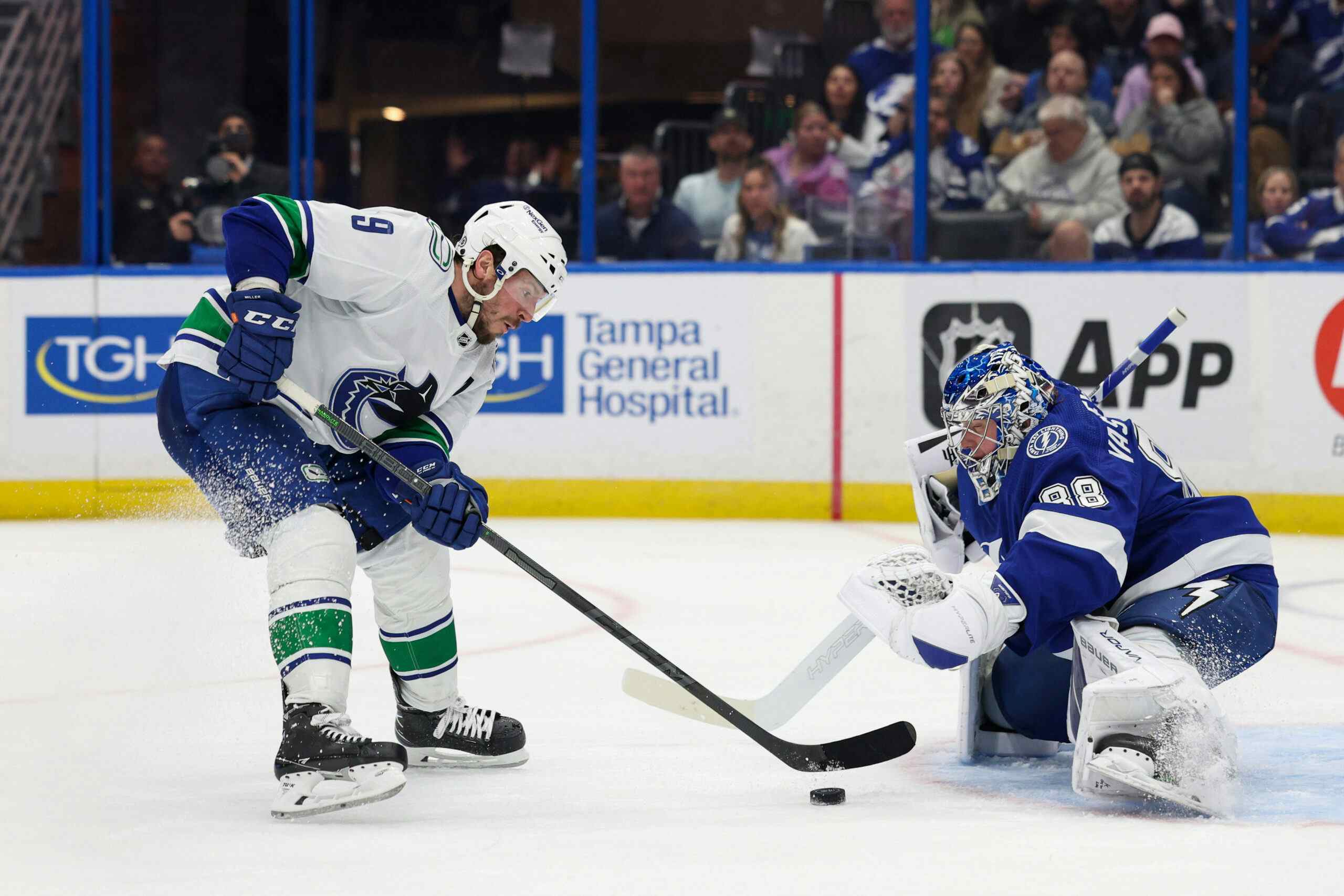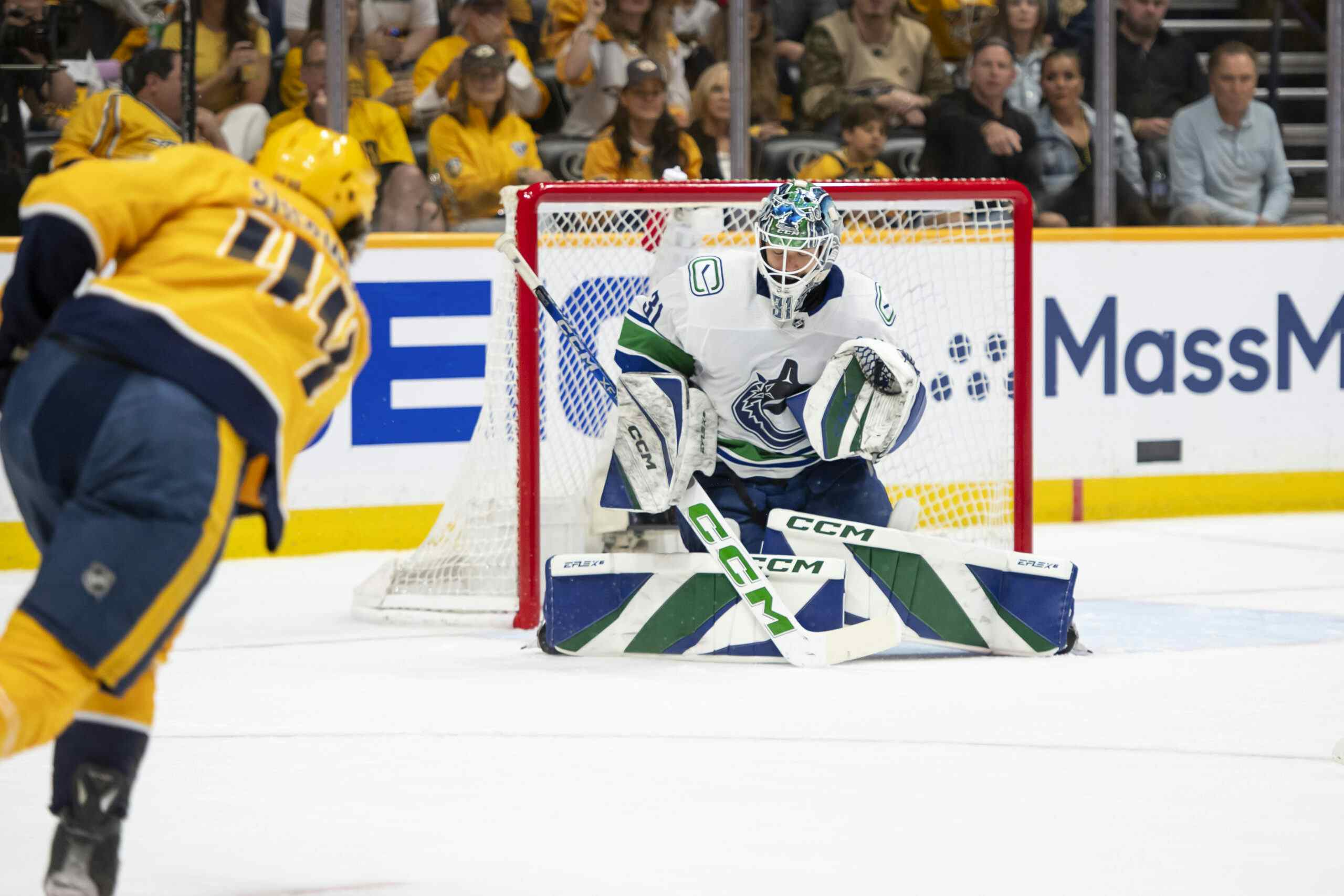2018 NHL Draft Preliminary Rankings: 1 to 5
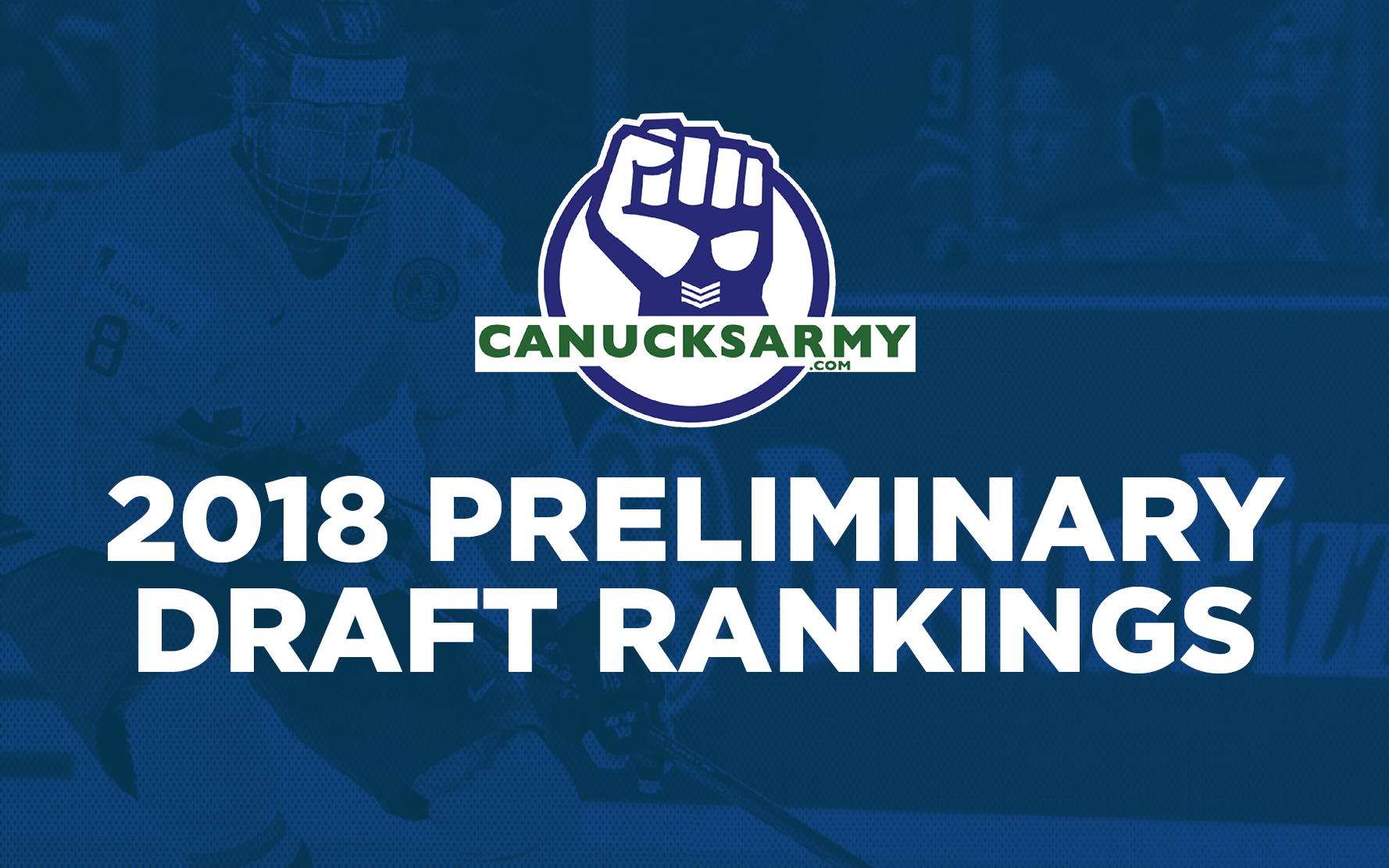
By Jeremy Davis
6 years agoWhen it comes to summertime content, it’s never easy to make articles relevant. After all, there is very little hockey being played in the months of July and August. Now, however, with the World Junior Summer Showcase and the U18 Ivan Hlinka tournament having just wrapped up, seems a good a time as any to release my preliminary list of prospects for the 2018 NHL Entry Draft.
With each passing year, our attention to the draft grows, with our prospect profiles expanding from 45 to 60 to 100 over the past three seasons. 2018 could potentially be the biggest year for draft coverage yet, and certainly, this summer’s coverage is a step up from last year’s. After publishing a preliminary top ten for 2017 last September, this time around I have devised a list of 50 prospects, with some considerably more in depth coverage of the top end of that list. In fact, the little blurbs about each prospect became so in-depth that I’ve had to break the article up into chunks. This article will cover my top five prospects for next year’s draft. We’ll then move on to the next five, and the next five, and finally a list of all 50.
I should note that this list is my own, and not a consolidation of either other members of the network (as our Draft Profile series was) or industry rankings. Anything that you find utterly ridiculous about the arrangement of prospects can be blamed solely on me – though I hope it won’t come to that.
A Rundown of the Stats Used In These Articles
You can get draft lists from a myriad of sources, but since you came to Canucks Army, you can expect somewhat of a statistical lean. There will be video and some scouting reports as well, but much ink will be spilt on stats, as we have metrics here that you won’t find anywhere else. What follows is a brief description of each of the stats referenced in the tables below.
- Age: Exact age to two decimal points, calculated as of September 15th, 2016. That date is used for draft purposes – anyone with an exact age greater than or equal to 16.00 and less than 17.00 as of that date will be eligible for the first time in the 2018 draft.
- Box Cars: GP, G, A, P stand for the standard Games Played, Goals, Assists, and Points, during the 2016-17 regular season.
- Sh/GP: Shots on goal per games played.
- GF%: Percentage of 5-on-5 on-ice goals scored in favour of the player’s team.
- GF%rel: The difference between the player’s on-ice GF% relative to the team’s GF% when the player is off the ice.
- pGPS:
- xSucc is the Expected Success Rate for the player, based on how many similar players reached a 200 NHL game threshold, weighted by similarity.
- xPro/82 is the Expected Production of the player over 82 games, based on how similar players produced in the NHL, weighted by similarity.
- xVal is Expected Value, the product of xSucc and xPro/82. Check this article to see an Expected Value curve from last year’s draft to get an idea of what constitutes a “good” xVal. Last year the expected values in the first round ranged from about 35 to 15.
- SEAL: The SEAL adjusted scoring value. SEAL stands for Situational, Era, Age, and League. Here’s a rundown of the current iteration of SEAL, which evolved from a technique that Garret Hohl pioneered for the 2015 draft.
Certain metrics are only available for certain leagues, depending on how easily available the data is to the public, and in some cases whether or not Dylan Kirkby (our resident programmer) and I have had the time to set up the necessary data scrapers. Here’s a run down on which metrics are available in which leagues.
- pGPS: I can run pGPS data on about 20 leagues right now, so at the top of the draft, it’s easier just to say which leagues it doesn’t do. For the purposes of this list, the missing leagues are: the MHL (Russian Junior), SM-Liiga Nuorten (Finnish Junior).
- SEAL: SEAL adjustments are currently available for all CHL leagues (WHL, OHL, QMJHL), USHL, NCAA, SHL, and Czech Extraliga. Dependent on availability of situational scoring data.
- GF% and GF%rel: Currently available for all CHL leagues (WHL, OHL, QMJHL), USHL, and SHL, while the Czech Extraliga has GF% but not GF%rel.
#1 – Rasmus Dahlin (D – SHL)
| Age | Height | Nat. | Season | League | GP | G | A | P | Sh/GP | GF% | GF%rel | pGPS xSucc | xPro/ 82 | pGPS xVal | SEAL |
| 16.42 | 6.01 | SWE | 2016-17 | Superelit | 24 | 9 | 13 | 22 | 4.58 | 100% | 78 | 77.7 | |||
| SHL | 26 | 1 | 2 | 3 | 0.81 | 58.3% | +5.8% | 34% | 40 | 13.4 | 0.692 |
After a 2017 draft that had many underwhelmed regarding the top talent, the 2018 crop currently looks to have not one, but two franchise altering players, which, in our arbitrary tiering of elite players, is one step below generational. At this point, the race between Rasmus Dahlin and Andrei Svechnikov is quite close, but I’m leaning towards Dahlin at this point, in part because of the positional factor. Players that can do what Dahlin can from the backend are considerably rarer than wingers with Svechnikov’s skill set.
The Erik Karlsson comparison comes up whenever there’s a mobile defenceman near the top of the draft class (heck, it came up for Cale Makar, Timothy Liljegren and Erik Brannstrom last year), but Dahlin is more worthy of the comparison than most. Putting aside the fact that Karlsson was the lone statistical match to Dahlin’s SuperElit season last year, the stylistic connection is remarkable.
Dahlin is an extraordinary puck rusher, aided by superb puck skills in concert with excellent speed and exceptional agility. Last season, Makar drew plenty of attention with his rushes and abilities to cut through defences. But what Makar did against Alberta Junior league competition, Dahlin did against men in the SHL, the world’s third best hockey league, while being more than a full year younger than Makar.
Failed to load video.
From a statistical perspective, there are a couple of things that stand out. Dahlin’s pGPS Expected Success Rate from his SuperElit season was 100%, with the lone match being, as mentioned, Karlsson. As a 16-year-old in the under-18 league, Dahlin tallied 22 points in 24 games from the back end, and his 4.58 shots on net per game were third best, after a couple of older players (including the aforementioned Brannstrom).
In the SHL, Dahlin scored a goal and added two assists in 26 games. Not eye popping production, which led to a less impressive 34% Expected Success Rate, and a SEAL adjusted scoring rate of 0.692 that pegged him as the fourth most productive defenceman of the class. There are a couple of caveats though. First, though he scored just the one goal during the season, he put 21 shots on net (and another 34 missed the net), giving him a shooting percentage of 4.8%. He also managed this while averaging just 12 minutes a game. Furthermore, he went on to score two goals and three assists in 14 playoff games, more than tripling his per game point rate, perhaps showing a glimpse of what’s to come next season.
#2 – Andrei Svechnikov (RW – OHL)
| Age | Height | Nat. | Season | League | GP | G | A | P | Sh/GP | GF% | GF%rel | pGPS xSucc | xPro/ 82 | pGPS xVal | SEAL |
| 16.47 | 6.02 | RUS | 2016-17 | USHL | 44 | 26 | 27 | 53 | 3.31 | 70.1% | +16.8% | 100% | 73 | 73.0 | 1.356 |
Younger brothers of recently drafted players are going to be a bit of a theme on this list, especially in the early going. We’ll kick that off with Andrei Svechnikov, the younger brother of Detroit Red Wings prospect, Evgeni Svechnikov. Like his brother, who was selected 19th overall in 2015, Andrei’s game is built on speed, skill, and a deadly shot. It’s just that he does each of these things even better than his brother does.
Listed at 6-foot-2 and 190 pounds, Svechnikov has the size and power of a large player but also has the speed and agility of a player much smaller. He takes complete control of games when the puck is on his stick and was dominant at every level he played at in 2016-17, be that the USHL or international play. An electrifying talent, he beats opponents in a myriad of ways, from overpowering defenders to one-on-one dekes, from playmaking to rocketing pucks by goaltenders from a distance — Svechnikov is always a threat.
Failed to load video.
He’s no slouch in his own end either and knows just where to be to break up plays and recover pucks and send his team back in the right direction. Svechnikov spent his regular season on a Muskegon Lumberjacks team that performed reasonably well, placing third in their division (though they lost in the first round of the playoffs). The team had a 5-on-5 goal share of nearly 60%, the second best in the league. Much of that can be attributed to Svechnikov, who boasted a GF% of 70.1%. When he was off the ice, the Lumberjacks’ goal share dropped to 53.4%, giving him a GF%rel of +16.8%.
The effect of Svechnikov on his teammates was universal, as illustrated by the following graph.
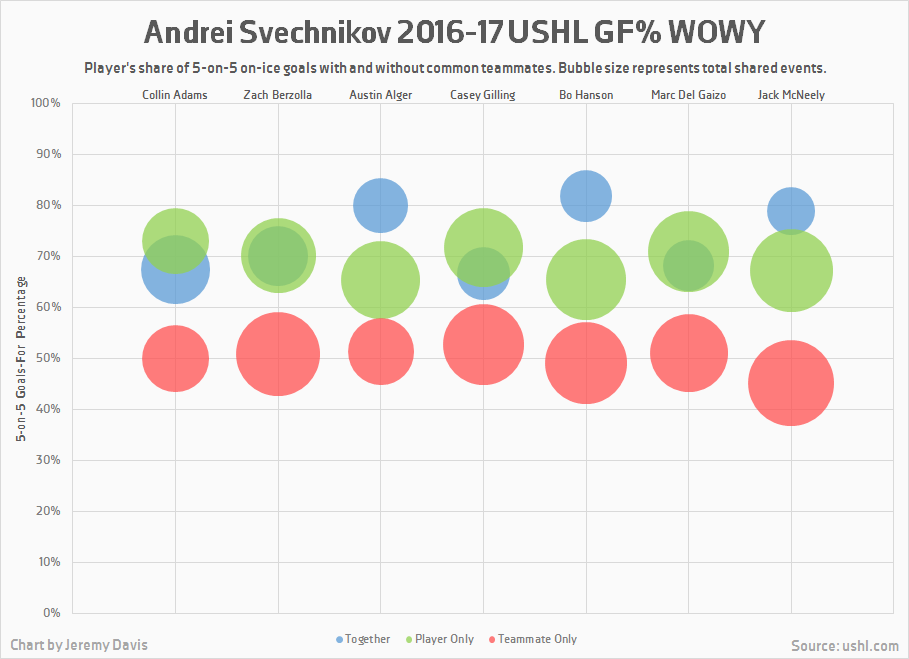
Having dominated the USHL already, Svechnikov will be looking for a greater challenge in his draft year. With it known that he wasn’t planning on taking the college route, the OHL’s Barrie Colts selected Svechnikov first overall in the CHL import draft in June, meaning we’ll have plenty of opportunities to see the young Russian tear it up in the world’s best under-20 league.
#3 – Joe Veleno (C – QMJHL)
| Age | Height | Nat. | Season | League | GP | G | A | P | Sh/GP | GF% | GF%rel | pGPS xSucc | xPro/ 82 | pGPS xVal | SEAL |
| 16.67 | 6.00 | CAN | 2016-17 | QMJHL | 45 | 13 | 27 | 40 | 2.38 | 57.7% | -3.6% | 25% | 55 | 13.8 | 0.942 |
The top Canadian on this list, Joe Veleno’s name has been bandied about for a while already. That’s because despite being born in the year 2000, the soon-to-be-draft eligible Kirkland, QC native has already played two full seasons in the QMJHL, having been granted exceptional status by the CHL in 2015 to start major-junior hockey a year early. In doing so, he followed in the hallowed footsteps of John Tavares, Aaron Ekblad, and Connor McDavid — all eventual first overall picks in the NHL draft –, as well as the not so hallowed footsteps of Sean Day, who was selected 81st overall by the New York Rangers in 2016, in a classic “one of these things, is not like the other” scenario.
Veleno’s exceptional status was viewed to be even more controversial than Day’s at the time, though at this point it seems that Veleno is closer to the first three exceptions than Day (who completely fell off the radar as a top pick in his draft year), though Veleno won’t be drafted first overall, and he certainly won’t be an NHLer on the level of Tavares or McDavid. In fact, his hold on the third overall spot is pretty tenuous, as after Dahlin and Svechnikov, there isn’t much of a consensus on the order of the next handful of prospects, and Veleno could already conceivably fall anywhere in the top five or even top ten.
Failed to load video.
Veleno’s 40 points in 45 games give him a respectable SEAL adjusted scoring rate of 0.94 points per game. His pGPS Expected Success Rate is at 25%, which isn’t great this high in the draft, and his Expected Value would be appropriate for a late first/early second pick in 2017. However, Veleno does play in the QMJHL, which works against him. Far too many forwards have scored at excellent rates in the Q and went on to do nothing, and at present, I’m still looking for ways to further differentiate the future successes from the future failures.
Veleno’s shot rate (2.38 shots on net per game) is in the upper echelon but isn’t elite. He possesses a strong goals-for percentage of 58%, but on the Saint John’s Sea Dogs (the team that represented the QMJHL in the Memorial Cup), he actually has a negative GF%rel of -3.6%. Still, he was well over 50% as a 17-year old on a Memorial Cup qualifying team, with the numbers of several of his frequent linemates taking dips when moved away from him.
Veleno is a highly skilled player who’s been on the radar for a long time, but he’s no lock to go this high. He’ll have to have an excellent draft season to retain this position, and he’s an easy candidate to fall a little bit if he has a less than ideal year.
#4 – Ryan Merkley (D – OHL)
| Age | Height | Nat. | Season | League | GP | G | A | P | Sh/GP | GF% | GF%rel | pGPS xSucc | xPro/ 82 | pGPS xVal | SEAL |
| 16.09 | 5.11 | CAN | 2016-17 | OHL | 62 | 12 | 43 | 55 | 2.50 | 38.1% | -2.4% | 91% | 33 | 29.6 | 1.053 |
Ryan Merkley is an early head scratcher for me. Among the services that have released rankings so far, Merkley is listed at 8th (Future Considerations), 22nd (HockeyProspect.com), and 23rd (ISS Hockey) – rankings which I find progressively more astounding.
Merkley is a dynamic defenceman with all manner of offensive skill and flourish. He can hammer the puck, but it’s really his ability to dance around the offensive zone — relying on puck handling, protection, and high-level agility and edge work — that catches the eye. His ability to process the game and find open teammates is continuously on display as well.
The list of knocks on Merkley is not a short one, which is surely why he’s been ranked low by some. First, he’s not very big: he’s under 6-feet, and despite the movement away from the importance of size at hockey’s highest level, there is still a bias at some stages. Secondly, and probably of greater note, is the fact that his defensive play is heavily criticized. His positioning needs plenty of work, and while he can hang with most players in his own zone simply on the strength of his skating, he does make it harder on himself by not always knowing where to be. Third, he has a penchant for taken undisciplined penalties. 26 of his 50 penalty minutes last season came from obstruction penalties (tripping, hooking, holding, or slashing), which is often an indication or result of a player being out of position, getting beat, or chasing the play.
Finally, the offensive flourish that he shows in the offensive zone can occasionally lead to bad turnovers, and he tries to make more moves than he ought to. The NHL, and North American hockey in general, is still dominated by the mindset of safe plays and the idea that attempting a skilled maneuver and failing is worse than not trying at all.
Take a look at Merkley in action though, and tell me this isn’t something that you want to see more of:
Failed to load video.
Next, consider this: with a mid-August birthday, Merkley was just a month away from being a 2019 draft prospect. This kid, who scored 55 points in 62 games, in the OHL, as a defenceman — on an awful team I might add — won’t turn 17 for almost two more weeks. Perhaps someone should be asking the question of whether some of these issues (i.e., trying to do too much on his own, an apparent lack of discipline) are symptoms of a lack of maturity, and whether that goes hand in hand with being one of the youngest players in the league, and whether some of those problems will diminish as he simply grows older.
These are important questions because if you dismiss this player, you might be missing out on a whole lot of skill. pGPS pegged Merkley with a 91% Expected Success Rate, while his SEAL adjusted scoring rate of 1.053 was the third best of all draft-minus-one players, trailing only Svechnikov and USNTDP defenceman Quinton Hughes.
He’s not without his concerns statistically though. Merkley’s had a god awful goals-for percentage of 38.1% last season. However, the bad taste of that is mitigated by the fact that he played for the Guelph Storm, who were very bad, accounting for a share of barely of 40% of the 5-on-5 goals that were scored. Merkley ended up with a GF%rel of -2.4%, which isn’t great (he looked to be part of the problem on a team that didn’t really have a solution), but he solely wasn’t solely responsible for his or the team’s abysmal on-ice numbers.
Merkley returns to the OHL next season, where we’ll get a chance to assess whether another year of age and experience improves some of the holes in his game.
#5 – Filip Zadina (LW – QMJHL)
| Age | Height | Nat. | Season | League | GP | G | A | P | Sh/GP | GF% | GF%rel | pGPS xSucc | xPro/ 82 | pGPS xVal | SEAL |
| 16.80 | 6.00 | CZE | 2016-17 | Czech | 25 | 1 | 1 | 2 | 0.72 | 23.5% | 25% | 44 | 11.3 | 0.246 |
Czech winger Filip Zadina is a prominent goal-scoring prospect out of the Czech Republic. He has a hard and accurate shot, an explosive skating stride, and plays with both strength and finesse. He spent the majority of last season in Czechia’s highest professional league, logging 25 games for Dynamo Pardubice. His results there won’t jump off the page, but his international results certainly do.
Zadina had a strong year in international competition in 2016-17, being a standout player at every tournament he participated in, despite being a 16-year old on Under-18 squads. Zadina tallied 20 goals and 31 points in 22 U18 games last season, including six points in five games at the World Under-18’s in Slovakia in April, where he stole that spotlight away from Martin Necas, one of the top prospects in the 2017 draft.
Failed to load video.
The two points that Zadina accumulated in more than two dozen games in the Extraliga don’t inspire a ton of confidence, but of course, this is a professional league we are talking about. For additional context, consider than Zadina was also averaging just 7:50 of ice time per game – well behind draft eligible players like Necas and Filip Chytil, who were both in the 12 and a half minute per game range. Zadina also spent just 1:41 over the course of those 25 games on the power play, severely limiting his opportunity to cash in on the man advantage.
This led to a rather pedestrian SEAL adjusted scoring rate of 0.25, which is quite a ways down the list. Like any other fledgeling statistical model, SEAL is not without its aberrations. One such that I’ve noticed so far is that it appears to be underrating Czech forwards (Necas and Chytil seemed further down last year’s list than they ought to have been as well), largely as a result of these forwards having noticeably lower production than their Swedish and Russian counterparts.
SEAL’s league adjustments are objective and shouldn’t be manually adjusted on a whim, but it did get me thinking about an alternative explanation, such as that the quality of the Czech league is improving, making it harder for young players to produce points compared to their predecessors. Plotting the year-to-year conversion rates over time, that does appear to be what’s happening: Czech players are retaining their per game production better than they used to, meaning that either the Czech league is improving, or the NHL and AHL are getting worse (the former explanation seems much more plausible).

Even with that low-end production, Zadina was still given a 25% likelihood of success by pGPS, with Michael Frolik, Patrick Stefan, and Vladimir Sobotka being among his statistical matches.
Canucks fans were pretty close to getting a close look at a probably high pick at the next year’s draft when young Czech phenom was selected by the Giants in the 2016 import draft. Unfortunately for the Giants (and Vancouver area hockey fans), Zadina had no intention of coming to the west coast. As a result, the Giants released him, taking another player in the 2017 import draft, while Zadina was re-selected, this time by the Halifax Mooseheads, where he will report. This is the second time that in as many years that a top prospect has spurned Vancouver and gone to Halifax instead. The word is that the Giants passed on Nico Hischier in 2016 knowing that he wouldn’t come to Vancouver if selected – they instead chose Zadina that year with Hischier going to Halifax two spots later.
Recent articles from Jeremy Davis

